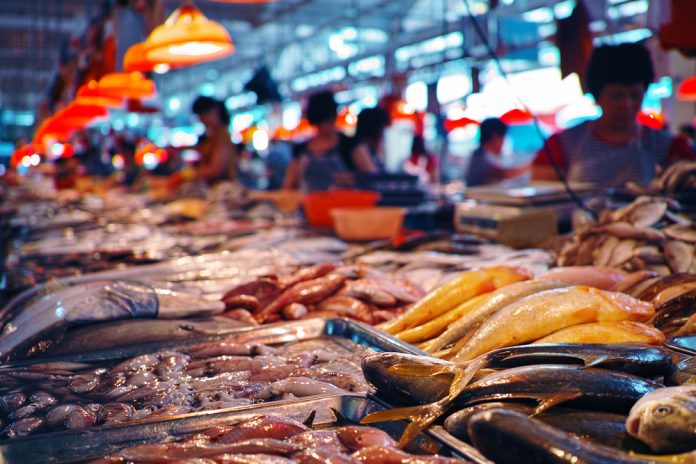Not many people are aware, but imported, frozen Tilapia is often treated with carbon monoxide (CO). This process is sneaky as it can help the fish look fresher for longer by delaying the oxidization of the meat, which is what causes fish to turn brown as it spoils.
Carbon Monoxide-Treated Tilapia
The amount of the gas used to treat the fish is minimal (0.4%) and there is no direct health risk in eating fish treated with CO. However, who really wants to eat fish that is treated with any chemicals at all? Plus, CO-treated fish makes it difficult to tell the actual freshness of the fish. A fish treated with CO will usually appear bright red in color (as pictured above) and some mistakenly think that this means the fish is more fresh, though often that is far from the truth. The practice of using carbon monoxide is deceptive to you, the consumer, and is most commonly found in frozen Tilapia from China, Vietnam and Thailand. The good news is that Tilapia from Honduras, Mexico or Indonesia are not treated with CO (as pictured below).
Carbon Monoxide-Free Tilapia
If you are looking to buy the freshest fish free of CO-treatment, how are you supposed to tell at first glance? One good tip is to look at the bloodline of the fish. In a side by side comparison, a thawed CO-treated fillet will have a brighter and more colorful bloodline than a fresh fillet, indicating that it has been treated to look fresh (as you can note by comparing the two photos above).
Another tip? Be mindful of where your fish is being imported from. As previously mentioned, a great deal of Tilapia imported into the United States comes from China, where the use of CO to preserve fish is acceptable as long as the product isn’t being consumed within the country.
To avoid consuming CO-treated Tilapia opt instead for Kirkland Frozen Tilapia Loins from Costco and fresh Tilapia from Mexico and Honduras, which are carbon monoxide free. These fillets are also 100% fish—nothing else added. This means they are free of antibiotics, chemicals, hormones and mercury, making them a safe, healthy and inexpensive option for you and your family.
So next time you’re browsing fish at the grocery store, make sure you actually look at what you’re buying. A few tips for identifying the freshest fish will go a long way!
Images: Vladimir Krupenkin / Shutterstock.com, Nataliia Pyzhova / Shutterstock, Regal Springs






